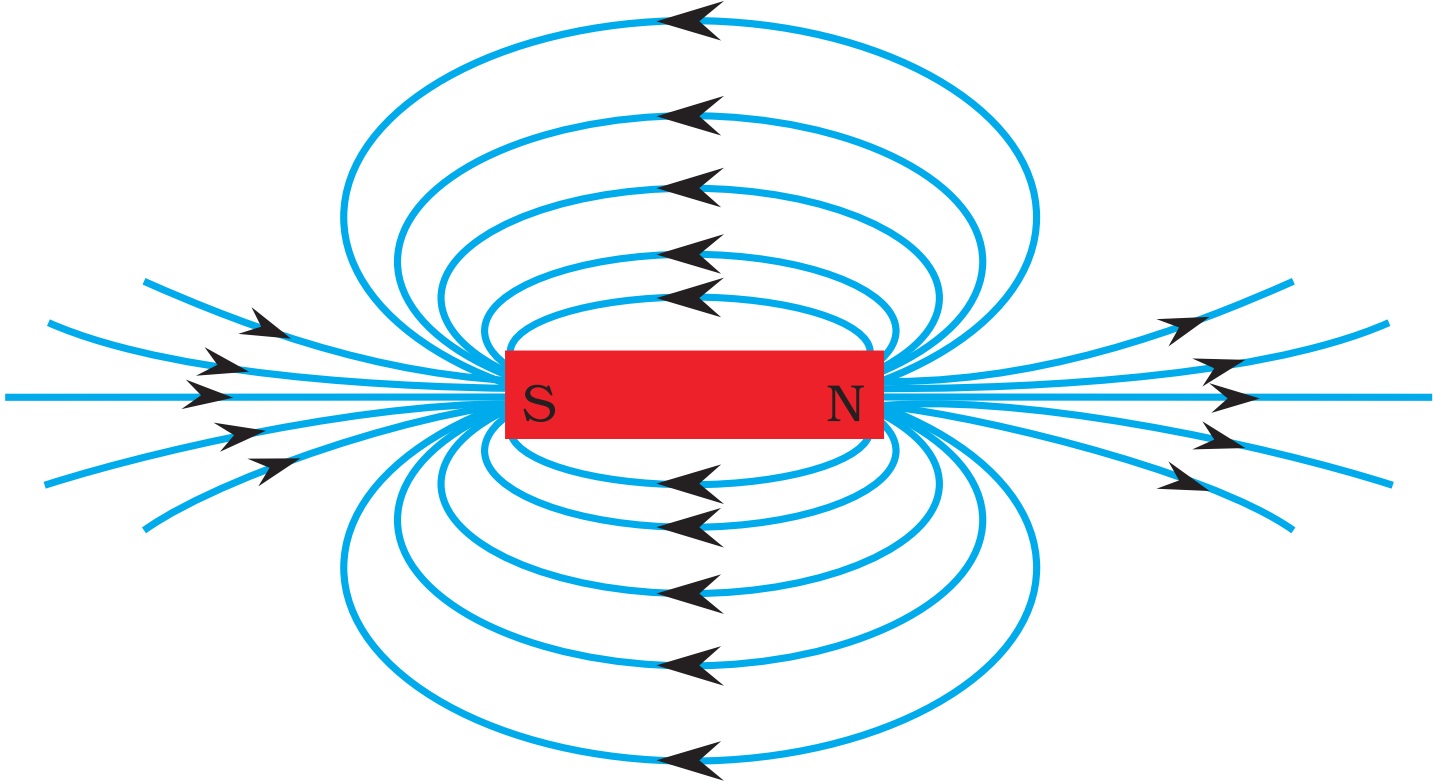

(b) A long and straight wire creates a field with magnetic field lines forming circular loops. (a) The magnetic field of a circular current loop is similar to that of a bar magnet. Small compasses could be used to map the fields shown here. Note the symbols used for field into and out of the paper. A small compass placed in these fields will align itself parallel to the field line at its location, with its north pole pointing in the direction of B. In both cases, the fields represent only the object creating them and not the probe testing them.) Figure 2 shows how the magnetic field appears for a current loop and a long straight wire, as could be explored with small compasses. (This is analogous to the way we tested electric fields with a small test charge. Small compasses used to test a magnetic field will not disturb it. (c) If the interior of the magnet could be probed, the field lines would be found to form continuous closed loops. The strength of the field is proportional to the closeness (or density) of the lines. (Recall that the Earth’s north magnetic pole is really a south pole in terms of definitions of poles on a bar magnet.) (b) Connecting the arrows gives continuous magnetic field lines.

(a) If small compasses are used to map the magnetic field around a bar magnet, they will point in the directions shown: away from the north pole of the magnet, toward the south pole of the magnet.

Magnetic field lines are defined to have the direction that a small compass points when placed at a location. The magnetic field is traditionally called the B-field. As shown in Figure 1, the direction of magnetic field lines is defined to be the direction in which the north end of a compass needle points. The pictorial representation of magnetic field lines is very useful in visualizing the strength and direction of the magnetic field. Since magnetic forces act at a distance, we define a magnetic field to represent magnetic forces. His ability to think deeply and clearly about action at a distance, particularly for gravitational, electric, and magnetic forces, later enabled him to create his revolutionary theory of relativity. Define magnetic field and describe the magnetic field lines of various magnetic fields.Įinstein is said to have been fascinated by a compass as a child, perhaps musing on how the needle felt a force without direct physical contact.


 0 kommentar(er)
0 kommentar(er)
